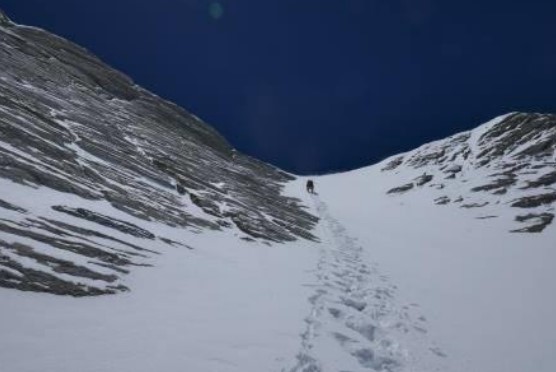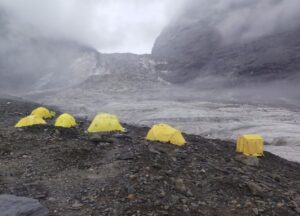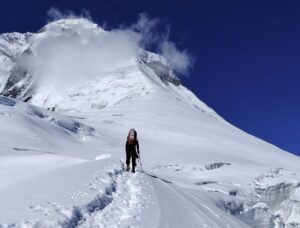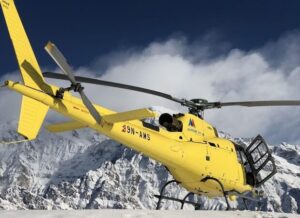The weak winds expected for the rest of this week have stirred all Nepal’s 8,000m base camps into action. On Dhaulagiri, the use of oxygen will allow for a quick two-day push.
Sajid Sadpara has confirmed the climbers will set off tomorrow and should reach the top on Friday. Seven Summit Treks and its sister company, 14 Peaks Expedition, are outfitting all the groups.
The deadline puts some pressure on the rope-fixing team led by “Makalu” Lakpa Sherpa and including Taraman Tamang, Pem Dorchi Sherpa, Phurba Kusang Sherpa, Pasang Nurbu Sherpa, and Pemba Chhumbi Sherpa. They tried to summit four days ago but had to retreat just short of the highest point.
Lakpa says they fixed until 8,050m (Dhaulagiri is 8,167m), then retreated to Base Camp. Now, they will lead the group of climbers pushing for the summit. Everyone hopes to top out on the same day.
The summit day
The normal route on Dhaulagiri follows the Northeast Ridge until Camp 3, the starting point for the summit day. Camp 3 is usually at 7,300m-7,400m, at the junction of the Northeast and East Ridges. The climbers should reach it on Thursday and set off on their final push that night.
Shortly after Camp 3, the route abandons the ridge and makes a long traverse along the steep East Face, below the summit area. At 8,050m — currently, the end of the fixed ropes — the route goes up one of the couloirs that leads directly to the wide summit ridge of the mountain.

File image of Peter Hamor climbing the East Couloir of Dhaulagiri to the summit ridge. Photo: Ralf Dujmovits
Once off the ridge, the climbers will have to make sure they reach the highest point of the mountain. Many past teams have stopped at lower points, mistaking them for the top, especially in low visibility. Then, the climbers will have to retreat down the same way and be especially careful when traversing back to Camp 3 in the afternoon, when the slope may be avalanche-prone. Read more about the normal route on Dhaulagiri in ExplorersWeb’s Climbers’ Guide with 14×8,000m summiter Ralf Dujmovits.
In the last decade, the commercialization of the mountain has made it common for climbers to use supplementary oxygen, which is often supplied directly from helicopters.






